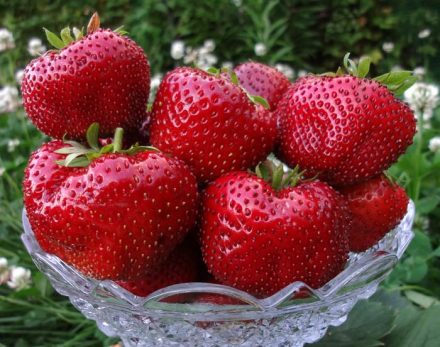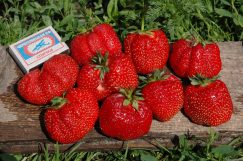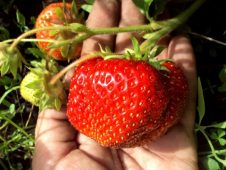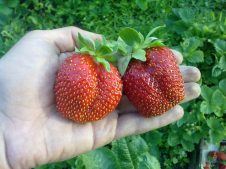The miracle of modern selection of strawberries Gigantella deserves special attention. Surprisingly large and tasty berries, good productivity and resistance to diseases, long fruiting period - these advantages made the variety desirable and beloved among gardeners.
Material Content:
Description and features of the variety
Gigantella is a Dutch strawberry variety. The fruits ripen in late June, large, sweet, weighing 40-60 g in the main crop. The first copies can reach 120 g, there are almost no small ones. The dense pulp makes the berry suitable for transportation for sale and convenient to freeze.
Description of the variety Gigantella surprises not only with the size of berries, but also with the size of plants, a large number of peduncles (up to 20). Harvest ripens on powerful bushes with large leaves, the height of which can reach 50 cm. Strawberries develop quickly, give a lot of mustache. It is resistant to frost.
Growing seedlings from seeds
Most often, strawberries Gigantella propagated vegetatively - mustache. But to buy bushes of high-quality seedlings is not always an opportunity. The first plants for their strawberry plantation can be obtained from seeds, although the process is time-consuming and difficult. For growing, you will need a phytolamp, a landing container, plastic dive glasses, a sterile soil substrate and a spray.
In January or the first decade of February, strawberry seeds are planted for seedlings in a container.
Step-by-step process description:
- Prepare a soil mixture of purchased land and perlite.
- Fill the food container with earth.
- The seeds of the plant are carefully laid out on the surface at a distance of 2 cm, slightly moistened with a spray bottle.
- After sowing, the container is covered with a lid or film.
- The room temperature should be +25 ° C.
- When shoots appear, the lid is removed.
- They monitor the moisture of the soil, avoiding drying out. The earth should be moderately moist.
- When watering, they try not to get on the plants - they can bend to the ground, and not rise. Water over the edge.
- Excess moisture is undesirable, as the root system easily rot.
- In the phase of the appearance of two leaves, seedlings are placed in separate pots.
- To prevent plants from stretching, the air temperature at this stage should be 18–20 ° C.
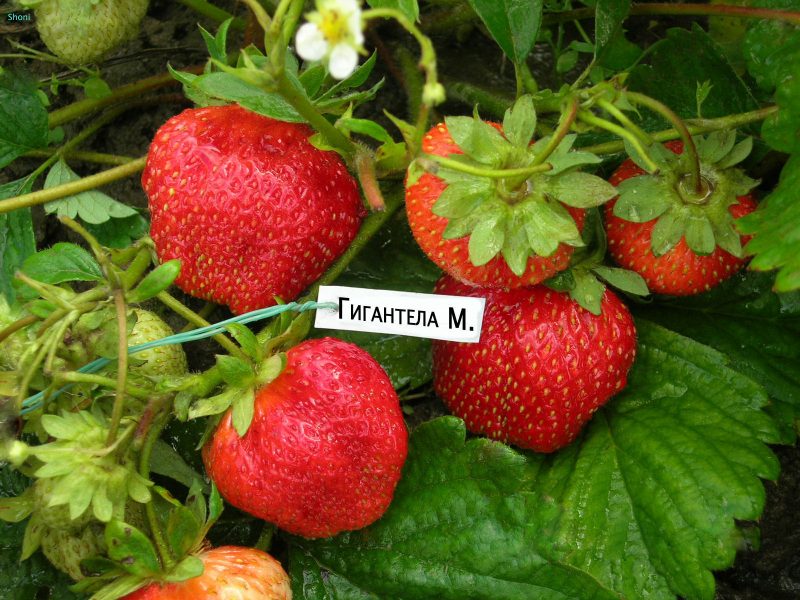
Seedlings are kept under a phytolamp away from the window. In the early spring, the window sill is too cold for immature seedlings. Seedlings are planted in open ground when steady warming sets in - in late April or early May.
Technology of planting plants in the ground
Before planting strawberries, beds are prepared - weeds are harvested, the soil is dug up in the autumn, and organic fertilizers are applied. The largest commodity berry grows in the first year, but for this you need to plant strawberries on time.
Young strawberries from mustache are planted in late July. The distance between the bushes is 50–70 cm. For planting material, take a mustache with rosettes, cut after fruiting the berries.
It is advisable to root seedlings on fertile days according to the lunar calendar. A mustache with rudiments of roots is planted in cassettes, filling them with a universal peat mixture. The land from the garden is not suitable, because there are a lot of weed seeds in it. The side of the cell in the cassette must be at least 4.5 cm.
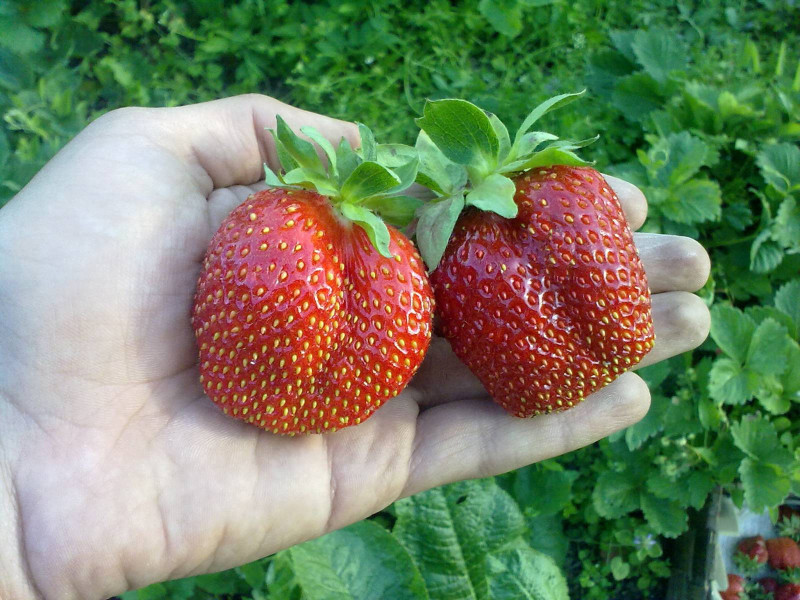
After the mustache is planted in cassettes, they are watered, shaded with thin agrofibre. Then watering should be carried out regularly, you can do it from a watering can directly on top of the agrofibre when it dries. Remove the non-woven material not earlier than after 2 weeks.
If there is no time to water strawberry seedlings every day, mustaches can be rooted in small pots when they are still on the plants. Only seedlings of the first order are stored for seedlings. Everyone else cuts.
Rules for the care of strawberries Gigantella
When the snow melts, strawberry beds are treated with Bordeaux liquid, loosen the soil, and cut the damaged leaves. Plants develop very quickly, releasing a large number of mustaches. To collect a good crop, all unnecessary mustaches are removed in a timely manner. To obtain seedlings, several bushes are left without peduncles, giving the opportunity to develop daughter sockets on the mustache.
Convenient care and growing strawberries Gigantella on agrofibre. This solves the problem of frequent weeding and loosening of the soil, reduces the amount of watering. In addition to non-woven material, the earth around the bushes can be mulched with straw.
High productivity depletes plants, and they need high-quality nutrition. It is better to use complex mineral fertilizers specially designed for this. In the first year, nitrogen fertilizing is not applied, it can cause rotting of berries and abundant growth of green mass to the detriment of fruiting. Potash and phosphorus fertilizers, necessary for the ripening of a quality crop, are given to plants in May – June, and then after harvesting in August.
Pest and Disease Control
Before flowering and after harvesting, strawberry beds are treated with a mixture of insecticide and fungicide (Fitosporin and Fitoverm or others) for the prevention of fungal diseases and pest control.
If strawberry or spider mite settles on the bushes, they use acaricides - Actellik, Flumayt, Ortus. From slugs that damage the crop, Slimax is effective.
Harvesting and Aftercare
Gigantella is a late variety. Berries begin to ripen in July, gaining size and sweetness. The name of the variety speaks for itself, implying a large plant. Indeed, large bushes and berries grow.
After harvesting, strawberry beds need care. It is necessary to cut off all the foliage and the newly appearing mustache, treat all 1% with a Bordeaux mixture.If there are tick pests, spray the beds with colloidal sulfur (60 g per 10 liters of water).
At the same time, fertilizing with complex mineral fertilizers is carried out. Cut leaves are destroyed, and a mustache with root buds is rooted in plastic cassettes.
How many years does Strawberry Gigantella bear fruit
Experienced gardeners know that usually strawberries bear fruit well for the first three years. Then the plantations are depleted, and in need of updating. But Gigantella is an exception to the rule.
This variety is remarkable in that it can grow in one place up to 8 years without reducing yield. Of course, for this you need to prepare the soil well, carry out regular fertilizing with mineral and organic fertilizers.


